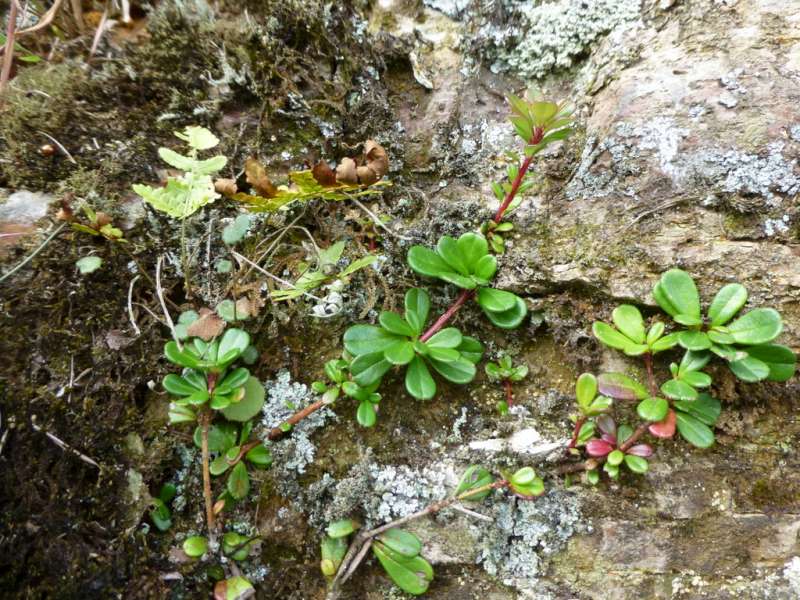Rhododendron poilanei
Billeder af Rhododendron poilanei
Beskrivelse
Flora of China
R. poilanei Dop in Lecomte, Fl. Indo-Chine. 3: 739. 1930. (Rhododendron emarginatum Hemsley & E. H. Wilson var. eriocarpum K. M. Feng; ?R. euonymifolium H. Léveillé.) Multi-branched shrubs, sometimes epiphytic, ca. 0.5 m tall; young shoots papillate, scaly; bud scales soon deciduous. Petiole 2–6 mm, scaly; leaf blade leathery, obovate or obovate-spathulate, 1.2–2.5 × 0.8–1.3 cm; base cuneate; apex rounded, sometimes retuse; abaxial surface pale yellowish green, scales 4–6 × their own diameter apart; lateral veins inconspicuous on both surfaces. Inflorescence terminal, 1-flowered. Pedicel 0.5–1 cm, scaly; calyx lobes conspicuous, 1–2 mm, scales present, sparse; corolla campanulate, golden, 0.8–1 cm; tube ca. 3 mm; outer surface sparsely scaly; mouth hairy; lobes 0.6–0.7 cm; stamens 10, unequal; filaments hairy around the middle, glabrous below; ovary scaly, pubescent; style straight, shorter than corolla and stamens. Capsule narrowly cylindric, ca. 10 mm. Fl. Aug–Sep. Mountain thickets; 1200–2100 m. Guangxi, Yunnan [N Vietnam].
R. emarginatum var. eriocarpum, described from Guangxi and Yunnan, is synonymous with R. poilanei, described from N Vietnam. These two taxa share a hairy ovary with R. euonymifolium, which could, if also synonymous, be the earliest name for the species (H. Léveillé, Repert. Spec. Nov. Regni Veg. 12: 103. 1913). One of the syntypes of the latter species, Esquirol 661 (E), is very poor but has ovaries, all of which are hairy. However, there is some confusion, as the other, rather more complete syntype, J. Cavalerie 264 (E), has both hairy and hairless ovaries. This is the crucial character separating R. poilanei from the more or less sympatric R. emarginatum. It appears that designation of a lectotype is required.

